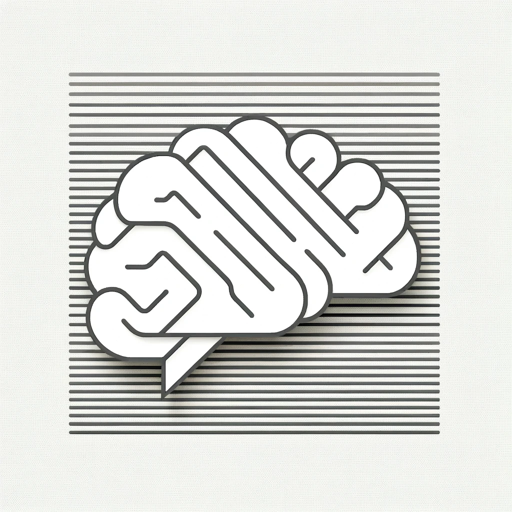Academic Translator (to English)-academic text translation tool.
AI-powered academic translation to English.
I specialize in translations. If a request fails, try 'Translate: [input texts]'.
Related Tools

Paper Interpreter (Japanese)
論文のPDFをアップロードするかURLを入力すると、内容を日本語で分かりやすく説明します。This is the Japanese version of Paper Interpreter. The international version is available at https://chat.openai.com/g/g-R9Dry2N5h-paper-interpreter

👌Academic Assistant Pro
Professional academic assistant with a professorial touch

Academic Researcher
Assists in academic research and article writing.

Translate Chinese to Academic English 科研论文中翻英
Send Chinese text directly to start translating it into academic English.

学术论文翻译
将专业学术论文翻译成浅显易懂的文章

科技论文翻译助手
我是科技论文翻译助手,专业中译英的论文翻译家。
20.0 / 5 (200 votes)
Introduction to Academic Translator (to English)
Academic Translator (to English) is a specialized tool designed to assist with translating texts into English with an academic tone. Its primary function is to ensure that translations maintain the precise meaning and context of the original text while adhering to academic writing standards. This tool is particularly useful for those who need to convert texts into English for academic purposes, ensuring that the translation remains both accurate and appropriately formal. For example, a researcher might use Academic Translator (to English) to translate a scientific article originally written in another language into English, ensuring that all technical terms and abbreviations are correctly preserved.

Main Functions of Academic Translator (to English)
Translation with academic tone
Example
Translating a thesis or dissertation from another language into English while preserving the formal tone and structure required in academic writing.
Scenario
A graduate student who has written their thesis in Spanish needs to submit it in English. The Academic Translator (to English) ensures that the translation not only conveys the correct information but also follows the conventions of academic English.
Preservation of technical terms and abbreviations
Example
Translating a medical research paper while maintaining the use of abbreviations such as MRI, DNA, etc., without spelling them out.
Scenario
A medical researcher has written a paper on genetic markers in cancer and needs to translate it into English. The translator ensures that terms like 'PCR' or 'NT2' remain in their abbreviated forms, as used in the original text, maintaining consistency with standard scientific writing.
Avoidance of informal language or digital watermarking
Example
Ensuring that a translated academic journal article is free from informal expressions and digital watermarks that might compromise its academic integrity.
Scenario
An academic journal editor needs to translate articles from various languages into English for publication. The translator ensures that the translations are formal, accurate, and devoid of any unnecessary digital artifacts, maintaining the high standards expected by the journal.
Ideal Users of Academic Translator (to English)
Researchers and Academics
These individuals often need to translate papers, articles, or research findings into English for publication in international journals. The Academic Translator (to English) helps them ensure that their translations meet the rigorous standards of academic writing, preserving the original meaning and context.
Graduate Students
Graduate students who are writing theses, dissertations, or other academic works in a language other than English can benefit from this service. The tool ensures that their work is translated into English with the appropriate academic tone, helping them to meet the requirements of their academic institutions.

How to Use Academic Translator (to English)
1
Visit aichatonline.org for a free trial without login, also no need for ChatGPT Plus.
2
Ensure you have the text you want to translate ready, preferably in a digital format, such as a Word document or a text file.
3
Paste or type the text into the input field provided on the website. Make sure to keep any relevant abbreviations as they are to ensure accurate translation.
4
Click the 'Translate' button and wait for the tool to process your text. The output will be in academically appropriate English, maintaining an academic tone and style.
5
Review the translated text and make any minor adjustments if necessary. For optimal results, double-check specific terminology to ensure it aligns with your academic field.
Try other advanced and practical GPTs
한글 맞춤법 검사기 | Korean Input Checker
AI-powered Korean Grammar and Spelling Assistant

Face Reader
Discover insights through AI-powered face reading.

論文要約GPT
AI-powered tool for precise academic paper summarization.

PPT图片制作助手
AI-powered tool for creating professional presentation images

KQL Query Helper
Master KQL with AI-powered insights

Computer Vision Developer
AI-powered computer vision coding made easy

Research Paper Writing
AI-driven research paper writing, simplified.

Viral Tweet Crafter
Boost your Twitter game with AI-crafted viral tweets.

Write Better Emails at Work
AI-powered tactics for professional emails.
CV Bulder
AI-Powered CV Creation and Enhancement.

Film Finder
Discover tailored film recommendations with AI.

Java Mentor
AI-powered guidance for Java mastery.

- Academic Writing
- Research Papers
- Journal Articles
- Thesis Translation
- Abstract Writing
Frequently Asked Questions About Academic Translator (to English)
What types of text can Academic Translator (to English) handle?
Academic Translator (to English) can handle a wide range of academic texts, including research papers, essays, journal articles, and abstracts. It is designed to preserve the academic integrity of the content while translating it into high-quality English.
Do I need to spell out abbreviations when using this tool?
No, you do not need to spell out abbreviations. The tool is designed to recognize and maintain the original abbreviations, ensuring that the translation remains accurate and contextually appropriate.
Is this tool suitable for non-native English speakers?
Yes, Academic Translator (to English) is particularly beneficial for non-native English speakers. It helps in translating complex academic texts into fluent English, ensuring that the final output meets academic standards.
Can this tool be used for non-academic translations?
While the tool is optimized for academic texts, it can also be used for other formal documents that require a professional tone. However, its primary function is to enhance academic writing.
What is the best way to ensure the translated text meets my specific needs?
For the best results, ensure that you provide a clear, well-structured input text. Reviewing the translated output and making minor adjustments can further tailor the text to your specific academic requirements.